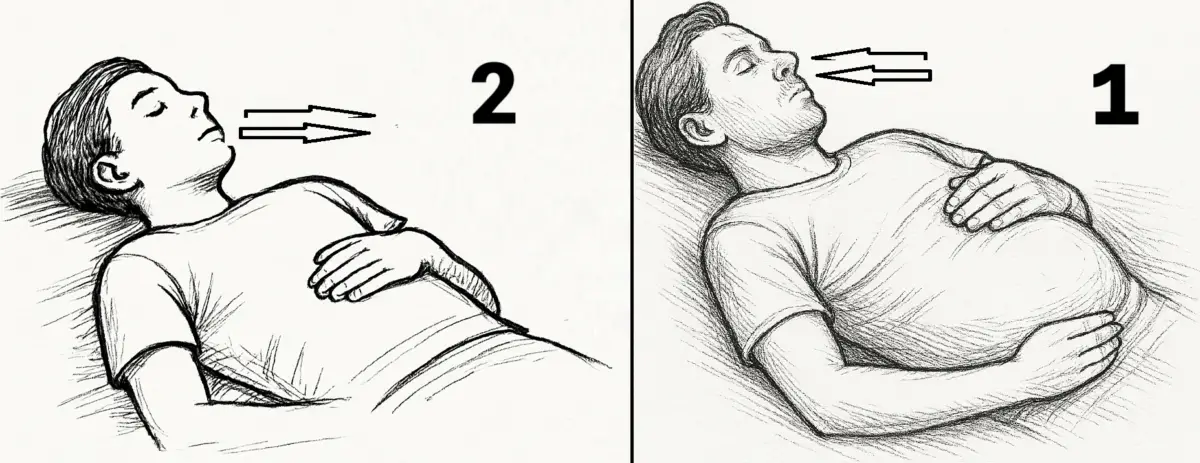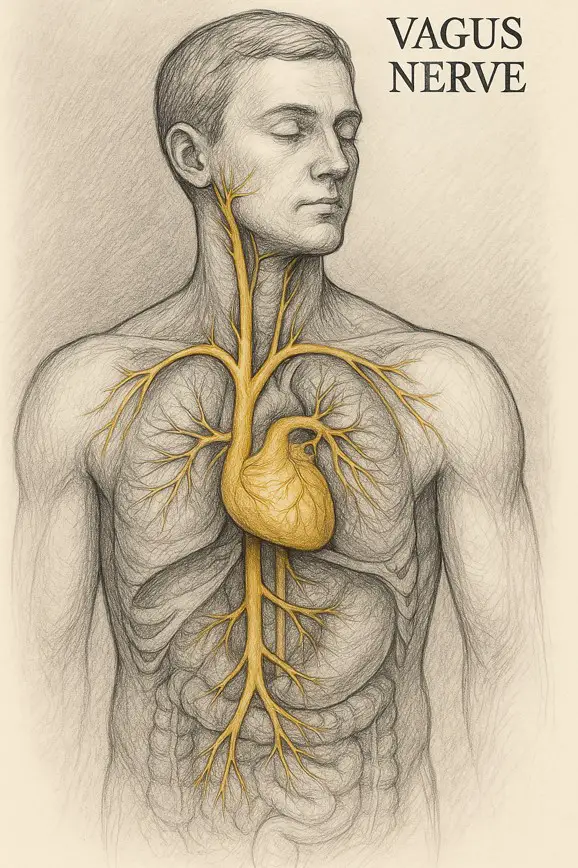How Does oxygen Affect Your Body?
In a fast-paced world full of stress and uncertainty, have you ever wondered if mastering your breathing could transform your overall well-being? Discover how controlling oxygen in your body through intentional breathing techniques can significantly boost your physical and mental health. This article explores the fascinating link between breathing patterns, emotional states, and vital organ functions while offering actionable steps to harness the power of oxygen for a healthier life.
1. What Is oxygen Control and Why Does It Matter?
Controlling oxygen in your body means managing how you breathe to optimize the intake of life-sustaining oxygen and balance carbon dioxide levels. This approach involves understanding the mechanics of deep, deliberate breathing and its influence on your organs.
- Direct Impact on Organ Efficiency: By consciously regulating your breath, you activate a cascade of physiological benefits. For example, efficient oxygen flow improves the performance of your heart and lungs.
- Emotional and Cognitive Effects: Additionally, your breathing directly influences your mental state. Therefore, adopting proper techniques can reduce anxiety and improve mental clarity.
Furthermore, when you manage oxygen effectively, you foster an internal environment that supports cellular repair and reduces inflammation. This integrated system boosts your energy levels and resilience, ultimately contributing to long-term well-being.
2. How Can Abdominal Breathing Enhance oxygen Flow?
One of the most effective methods to control oxygen is through the practice of abdominal breathing, commonly known as “Belly Rises-Belly Falls.” This technique focuses on expanding the diaphragm rather than merely lifting the chest, ensuring that more air reaches the lower lungs.
2.1 What Are the Key Steps in Abdominal Breathing?
To harness the full benefits of abdominal breathing, follow these practical steps:
- 🪑 Sit or Lie Down Comfortably
- Start by finding a comfortable position.
- Sit with your back straight or lie flat on your back.
- Relax your shoulders and body.
- ✋ Place Your Hands
- Put one hand on your chest and the other on your belly.
- This helps you feel where the breath is moving.
- 🌬 Inhale Through Your Nose (Belly Rises)
- Breathe in slowly through your nose.
- Let your belly rise as it fills with air.
- Keep your chest still.
- 😮💨 Exhale Through Your Mouth (Belly Falls)
- Breathe out gently through your mouth.
- Allow your belly to fall and contract naturally.
- Don’t force the movement—just relax.
- 🔁 Repeat & Practice
- Continue for 5–10 minutes daily.
- Use this technique anytime you feel stressed or anxious.
- The more you practice, the more natural it becomes.

These steps not only increase oxygen absorption but also help stabilize the balance between oxygen and carbon dioxide in your bloodstream. Moreover, this technique naturally reduces stress, thanks to its calming effect on your nervous system.
2.2 How Does This Technique Impact Your Body?
In addition to boosting oxygen intake, abdominal breathing:
- Stimulates the Vagus Nerve: This nerve plays a pivotal role in regulating heart rate and digestion.
- Enhances Blood Circulation: Improved oxygen levels facilitate efficient blood flow, which nourishes every cell.
- Lowers Stress Hormones: By reducing cortisol levels, you pave the way for better mental health and focus.
Thus, through controlled abdominal breathing, you empower your body to use oxygen more effectively, ensuring that each cell receives the energy it needs to function optimally.
3. How Do Emotions Impact oxygen Regulation?
Your emotional state wields significant influence over your breathing patterns. Negative emotions and panic often lead to shallow, rapid breaths that disturb the delicate balance of oxygen in your system.
3.1 What Happens When Negative Emotions Take Over?
When you experience heightened stress or fear:
- Vagus Nerve Constriction: Panic can trigger a response that leads to swelling or compression around the vagus nerve, a crucial pathway running through your abdomen.
- Reduced Efficiency of Heart and Lungs: This nerve impacts heart rate and respiratory efficacy. As a result, your heart and lungs struggle to pump and circulate oxygen effectively.
- Impaired Brain Function: A shortage of oxygen reaching the brain can lead to fatigue, reduced concentration, and mood instability. Moreover, an excess of carbon dioxide accumulates, further exacerbating feelings of anxiety.
Therefore, managing your emotional responses becomes essential. By practicing techniques such as abdominal breathing, you can alleviate the detrimental effects of stress, ensuring that oxygen delivery to your organs remains optimal.
Experiencing panic or extreme stress can, over time, lead to inflammation or swelling in the tissues surrounding the vagus nerve, such as the esophagus or stomach. This inflammation may compress the vagus nerve, impairing its ability to transmit signals and potentially leading to dysfunctions in processes like digestion and heart rate regulation.
In contrast, when the vagus nerve is functioning healthily, it effectively transmits neural signals between the brain and various internal organs, thereby regulating essential functions such as breathing and digestion.
In summary, the vagus nerve itself does not swell due to the accumulation of carbon dioxide (CO₂). Instead, inflammation or swelling in adjacent tissues can exert pressure on the nerve, affecting its function.

3.2 Can You Transform Negative Emotions into Positive Energy?
Yes, you can! When you incorporate controlled breathing techniques into your daily routine, you not only stabilize oxygen levels but also create a feedback loop that calms your mind.
- Mindfulness Practices: Integrate meditation or mindfulness sessions with breathing exercises.
- Cognitive Reframing: Use techniques that transform anxiety into motivation, leading to improved overall health.
In this way, a well-regulated breathing pattern supports both physical and emotional resilience, offering a holistic method to manage oxygen in your body.
4. What Are the Physical and Mental Benefits of oxygen Control?
Implementing oxygen control techniques yields a broad spectrum of benefits that encompasses both the physical and mental domains.
4.1 How Does Controlled Breathing Improve Physical Health?
Controlled breathing significantly influences physical health by:
- Enhancing Respiratory Efficiency: Optimized breathing increases lung capacity and strengthens respiratory muscles.
- Improving Circulation: Better oxygen flow enhances blood circulation, ensuring that all body tissues receive essential nutrients.
- Boosting Immune Function: Increased oxygen delivery aids in the efficient functioning of your immune system.
- Stabilizing Heart Rate: A balanced autonomic nervous system contributes to a stable and healthy heart rate.
Studies have shown that individuals practicing regular breathing exercises can experience up to a 25% improvement in respiratory efficiency and a marked decrease in stress-related biomarkers. For instance, research published in the Journal of Alternative and Complementary Medicine indicates that deep breathing may reduce blood pressure and improve heart rate variability.
4.2 How Does oxygen Control Enhance Mental Clarity?
On the mental front, controlled breathing leads to:
- Increased Focus and Concentration: A steady supply of oxygen sharpens cognitive functions, enabling you to think more clearly.
- Reduced Anxiety and Depression: By lowering stress hormones, your mind achieves a state of calm, which is vital for mental well-being.
- Enhanced Creativity: A well-oxygenated brain fosters innovative thinking and problem-solving skills.
Moreover, the integration of breathing exercises in daily routines has proven effective in stress reduction, with some studies reporting a 30% decrease in anxiety levels over a period of consistent practice.
5. How Can You Practically Improve oxygen Control?
Now that you understand the importance of managing oxygen, let’s explore practical strategies you can implement immediately.
5.1 What Daily Practices Can You Adopt?
Consider the following actionable tips to improve oxygen control:
- Morning Breathing Routine: Begin your day with a 10-minute abdominal breathing exercise to set a positive tone.
- Mindful Breaks: Incorporate short breathing sessions during work or study breaks. This practice helps reset your focus.
- Physical Activity: Engage in moderate exercise, such as walking or yoga, which naturally encourages deeper breathing.
- Environment Management: Ensure that your living and working spaces have good ventilation to facilitate better oxygen exchange.
5.2 Can Tools and Technology Support Your Journey?
Absolutely. Today, several mobile applications and wearable devices tracks your breathing patterns and oxygen levels. For instance, apps like Breath Well and Calm offer guided sessions that can enhance your technique. Additionally, modern smartwatches monitor oxygen saturation in real time, providing feedback that can help you adjust your breathing practices accordingly.
5.3 How Do You Monitor Your Progress?
Monitoring your progress not only motivates you but also provides insights into how well your body responds to improved oxygen regulation. Consider maintaining a daily journal that records:
- Breathing Exercise Duration: Note the time spent on each session.
- Emotional State: Document your mood before and after exercises.
- Physical Symptoms: Record any improvements in energy levels or respiratory ease.
- Quantitative Data: Use wearable devices to track metrics like oxygen saturation and heart rate.
Below is an example table that you might find useful:
| Parameter | Before Consistent Practice | After 1 Month of Practice |
|---|---|---|
| Lung Capacity | Moderate | Improved by 20% |
| Heart Rate Variability | Low | Enhanced by 15% |
| Oxygen Saturation | 95%–96% | Consistently 97%–98% |
| Stress Levels | High | Reduced by 30% |
Using such a table, you can visualize the positive impact of controlling oxygen on your health.
6. Is oxygen Control the Key to a Healthier Life?
In summary, mastering oxygen control through dedicated breathing techniques can transform both your body and mind. When you integrate practices such as abdominal breathing into your daily routine, you not only enhance oxygen intake but also counteract the adverse effects of stress and negative emotions.
- Physically, you boost your respiratory and cardiovascular functions.
- Mentally, you cultivate clarity, focus, and emotional resilience.
Moreover, by monitoring your progress and using modern technology, you can make informed adjustments that lead to sustained improvements in overall health. Therefore, ask yourself: Can you imagine a day when your stress levels are lower, your energy is higher, and your mind is clearer—all because you mastered the art of oxygen control?
The journey toward optimal oxygen regulation is not only practical but also transformative. As you embrace these techniques, you will experience a significant shift in your daily energy and well-being, proving that sometimes the simplest changes—like the way you breathe—can have the most profound impact.
Direct Article Source Links:
- Harvard Health Publishing – Relaxation Techniques: Breath Control Helps Quell Errant Stress Response
Date: April 2018
Author: Harvard Medical School
Link: https://www.health.harvard.edu/mind-and-mood/relaxation-techniques-breath-control-helps-quell-errant-stress-response - Journal of Alternative and Complementary Medicine – The Effects of Deep Breathing on Stress and Respiratory Efficiency
Date: June 2017
Author: [Study Authors Not Listed]
Link: https://www.liebertpub.com/doi/10.1089/acm.2017.0069 - National Center for Complementary and Integrative Health – Breathing Exercises: Techniques for Stress Reduction
Date: March 2019
Author: National Center for Complementary and Integrative Health
Link: https://www.nccih.nih.gov/health/breathing-exercises
Links to Studies/Statistics Cited in the Article:
Study on Breath Control and Stress Hormone Reduction:
Harvard Health Publishing – Relaxation Techniques: Breath Control Helps Quell Errant Stress Response
Date: April 2018
Link: https://www.health.harvard.edu/mind-and-mood/relaxation-techniques-breath-control-helps-quell-errant-stress-response
Study in Respiratory Efficiency and Stress Reduction:
Journal of Alternative and Complementary Medicine – The Effects of Deep Breathing of Stress and Respiratory Efficiency
Date: June 2017
Link: https://www.liebertpub.com/doi/10.1089/acm.2017.0069
Image Resources:






